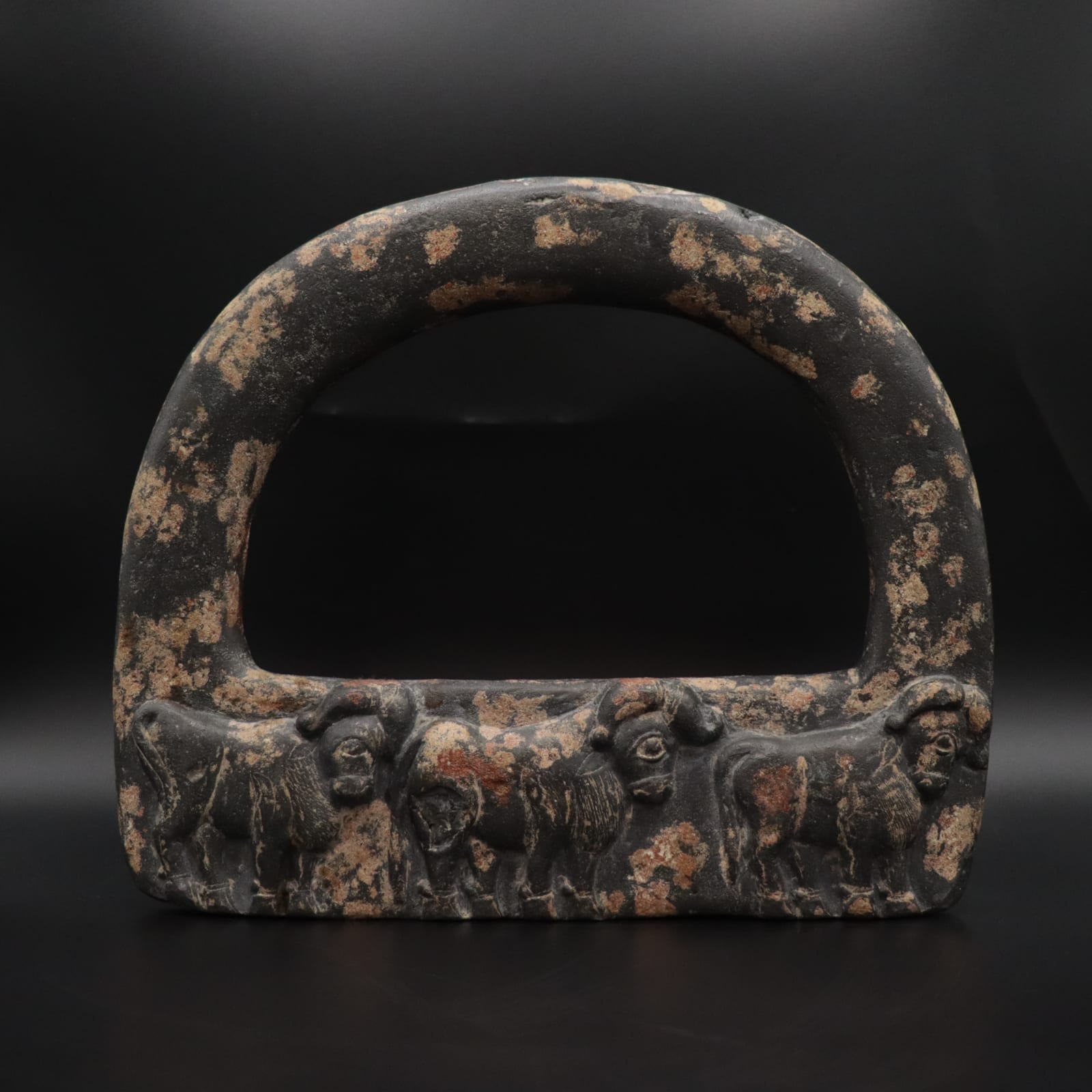Chlorite Lock Weight in the Intercultural Style, 3000 BCE - 2000 BCE
Chlorite
24 x 27 x 3.5 cm
9 1/2 x 10 5/8 x 1 3/8 in
9 1/2 x 10 5/8 x 1 3/8 in
LI.3260
Chlorite is a distinctive grey-green stone that was utilized during antiquity for the fabrication of luxurious containers and similar artefacts in the greater Gulf region as well as around the...
Chlorite is a distinctive grey-green stone that was utilized during antiquity for the fabrication of luxurious containers and similar artefacts in the greater Gulf region as well as around the area of what is currently southern Iran. Excavations at the archaeological site of Tepe Yaya in the Kerman Province of Iran, dated to the mid-third millennium B.C., unearthed the ruins of workshops where such objects were discovered. Around 2800 BC, chlorite or steatite stone bowls and lock weights were manufactured in considerable numbers in that area, though at a distance of around a thousand kilometres from the Mesopotamian centers of commerce of the time. The fact that such objects turn up in archaeological excavations at a greater number than they appear near their respective centers of productions is a clear testimony of the florid commercial trade at the time and the evidence suggests a regular production for export, in order to meet the economic demand in Mesopotamia.
Other excavations on Iranian soil help illuminate further such patterns of long-distance trade in these preliterate centuries.
On the island of Tarut, in the Gulf close to the Arabian coast, over six hundred complete and fragmentary vessels and weights have been unearthed. Because many partially formed objects found on Tarut were discovered next to chunks of unworked chlorite, it has been surmised that this island was once a center of production for these works.
Found throughout the ancient Near East, from Syria to the Indus Valley, revealing the extensive trade routes of the time, these works are classified by modern historians as belonging to the “Intercultural Style,” called so because they derive iconographical elements from both Near Eastern and Harappan traditions.
Much like the written cuneiform alphabet was used by several distinct cultures throughout the ancient Near East to dictate their individual spoken languages, so such artefacts were created by various cultures, each adorning the works with their own distinct aesthetic style. Many examples were discovered in the ruins of palatial and temple structures or entombed in the graves of the nobility, including Sumerian Mesopotamia.
Clearly these objects were among the most precious luxury items that could only be afforded by the ruling elite.
Other excavations on Iranian soil help illuminate further such patterns of long-distance trade in these preliterate centuries.
On the island of Tarut, in the Gulf close to the Arabian coast, over six hundred complete and fragmentary vessels and weights have been unearthed. Because many partially formed objects found on Tarut were discovered next to chunks of unworked chlorite, it has been surmised that this island was once a center of production for these works.
Found throughout the ancient Near East, from Syria to the Indus Valley, revealing the extensive trade routes of the time, these works are classified by modern historians as belonging to the “Intercultural Style,” called so because they derive iconographical elements from both Near Eastern and Harappan traditions.
Much like the written cuneiform alphabet was used by several distinct cultures throughout the ancient Near East to dictate their individual spoken languages, so such artefacts were created by various cultures, each adorning the works with their own distinct aesthetic style. Many examples were discovered in the ruins of palatial and temple structures or entombed in the graves of the nobility, including Sumerian Mesopotamia.
Clearly these objects were among the most precious luxury items that could only be afforded by the ruling elite.
